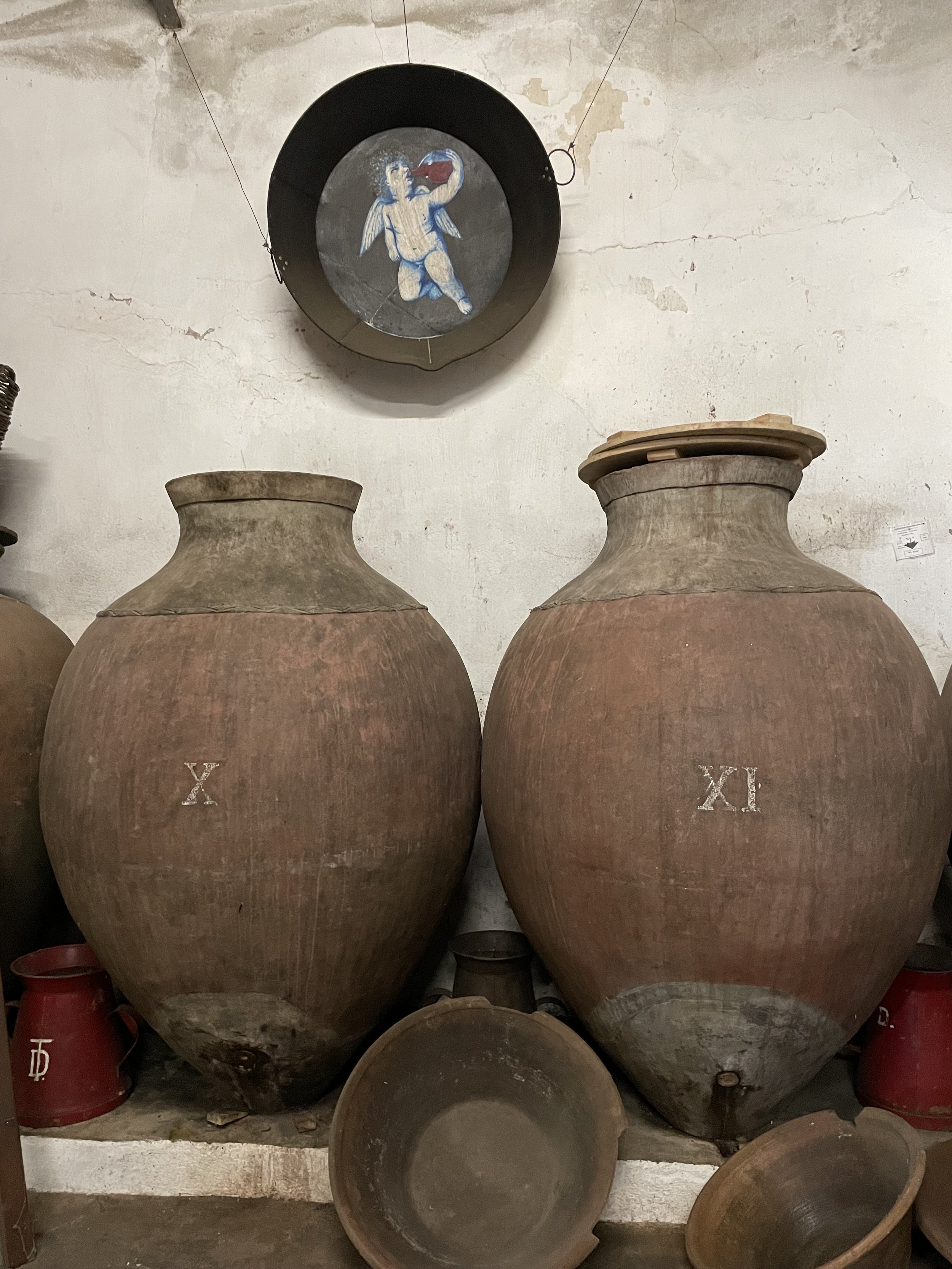Wines
Summary
XXVI Talhas is a project created by winemaker Ricardo Santos and his childhood friend Daniel Parreira. Growing up in the village of Vila Alva in the Alentejo, they observed their families making wine using the ancient technique - Talha - for which the Alentejo was renowned for centuries but which had all but disappeared. After nearly 30 years of dormancy, Ricardo and Daniel acquired the adega of Daniel’s grandfather, the highly-regarded Talha producer, Daniel António Tabaquinho dos Santos (1923-1985), known locally as “Mestre Daniel”, and in 2018 resurrected it as XXVI Talhas, the name paying homage to the 26 talhas (amphorae) which form the cellar. Thanks to these childhood friends and their dedication to preserving a unique cultural touchstone, wines from eras passed are being discovered by a modern audience.
The most traditional Talha wine in Vila Alva is the white, produced from the varieties Antão Vaz, Roupeiro, Manteúdo, Perrum, Diagalves (Uva Rei), Larião (Uva de Algibeira), among others. However, a significant amount of red wine has also always been produced here, mainly from the Tinta Grossa variety, and also some “Claret”, which results from the mixture of white and red grapes.
Produced in Talhas or in pots, heirs of the great Roman vessels, Talha wine, both white and red, results from a fermentation process that takes place together with the wine masses, in the slang called 'mother', where this wine remains at least until St. Martin’s day (11th of November), there acquiring the characteristics that distinguish it from all other wines.
In addition to the wine produced in large quantities in the cellars, there is a very interesting concept in Vila Alva which is the ‘Tareco’. The term 'Tareco' applies to the small clay pots that almost all villagers have to produce wine at home, in a tiny and improvised cellar or even in the garage, using exactly the same wine making method of Talha wine.


